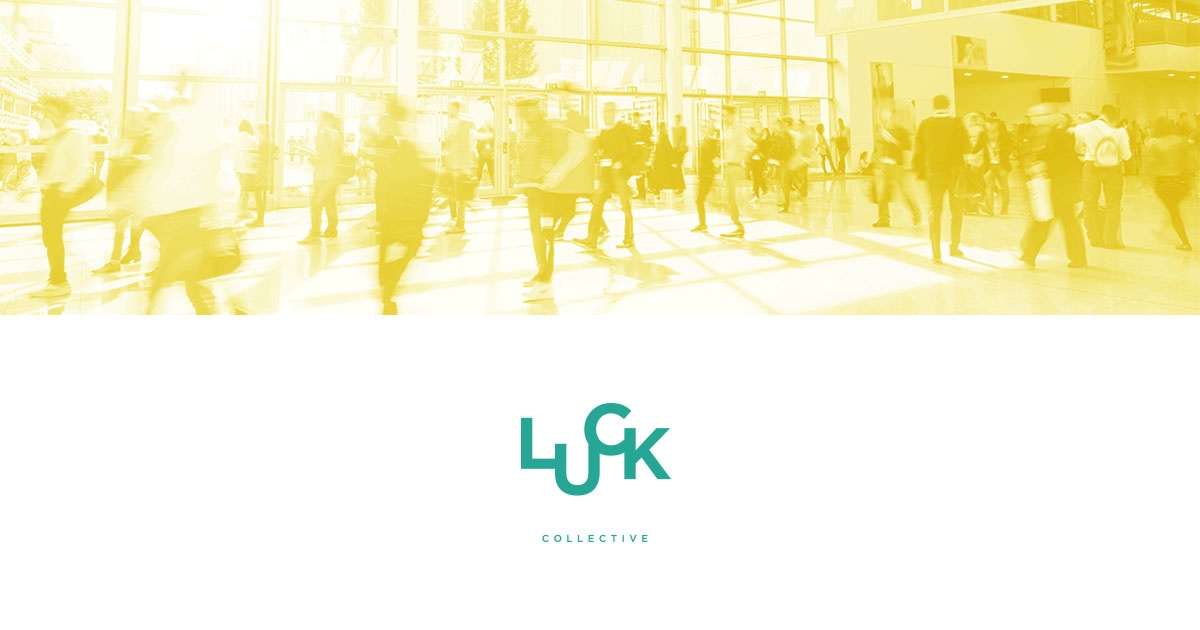Four Tips for Maximizing Conferences and Events
 Kristin Luck
Kristin Luck
Trade shows and events are typically one of the largest marketing expenses for B2B firms. They can be magical from a brand awareness and PR perspective or, on the downside, a total boondoggle for sales and marketing teams. I often hear sales folk enthusiastically evangelize an event without being able to quantify the number of sales qualified leads generated or demonstrate conversions to sales after their return to an office.
According to Salesforce, in the grand scheme of marketing activities, events typically generate some of the lowest ROI and conversion rates as compared to other lead generation activities.

So how do you get the most bang for your buck?
Here are four key tactics to ensure your trade show investment is more “boon” than “doggle.”

1. Establish a Conference Playbook
Go into every event with a plan. Ensure everyone attending knows their role and their lead generation target... yes, an actual numeric target! Map the event schedule and highlight key networking opportunities. If you have an exhibit booth, establish a schedule for staffing it and enlist hunters to actively engage with attendees and bring them to the booth.
If you’re hoping to participate as a speaker, track the call for papers well in advance and give yourself enough time to generate a submission that’s sure to be accepted. One of my go-to strategies for driving brand awareness and lead generation is to get on stage as a presenter!
Your conference playbook should also map the process for pre-event prospecting and post-event outreach.
2. Pre-Event Prospecting
Don’t have a conference attendee list? No problem. Download the conference program and create your own prospecting list from the presenters and exhibitors. Many conferences also have a networking app available well in advance that can be used to connect prior to the event to schedule onsite meetings. Map when key prospects will be speaking and plan to attend their session.
Note that I avoid the “rush to meet the speaker” directly after presentations. Instead, I wait to approach a speaker (using their presentation as the conversation starter) later in the day or at one of the conference networking events where I have a better shot at a one-on-one conversation that isn’t rushed or being listened in on by competitors.
3. Post-Event Outreach
Post-event outreach is critical to generating event ROI. And where things have the biggest opportunity to go south. I know how it goes… you get back to the office after a long week at an event and you’ve got hundreds of unanswered emails clogging your inbox and a backlog of work sitting on your desk. Ensure you’re scheduling time to follow-up on the leads you’ve generated. After a conference or trade show, all sales qualified leads should be contacted within one week of an event. All marketing qualified leads should be placed directly into a lead-nurturing funnel.
Don’t stop there… persistence is key. According to HubSpot, it takes an average of 18 calls or emails to actually connect with a potential buyer. The average person deletes 48% of the emails they receive each day in under 5 minutes, so developing an outreach strategy that cuts through clutter and reinforces the face-to-face contact you’ve already had with an event lead is paramount.
4. Measure, Learn, Repeat!
Lastly, track your event conversions and ROI. It’s easy to walk away from an event and anecdotally say “that was awesome” without all that “awesome” actually resulting in a sale. Assume that it will take up to 6 months to nurture all of your event-generated leads and determine true event ROI.
It’s important to remember that events, particularly for early-stage firms, can serve as brand building vehicles that may be more challenging to measure from a ROI perspective. That said, use conversion rates and ROI to give an accurate assessment of individual prospecting performance at events (allowing you to tailor who you send) and whether a particular trade show or event is truly worth future investment.
What are your top tips for getting the most out of your trade show investment? Comment below!

